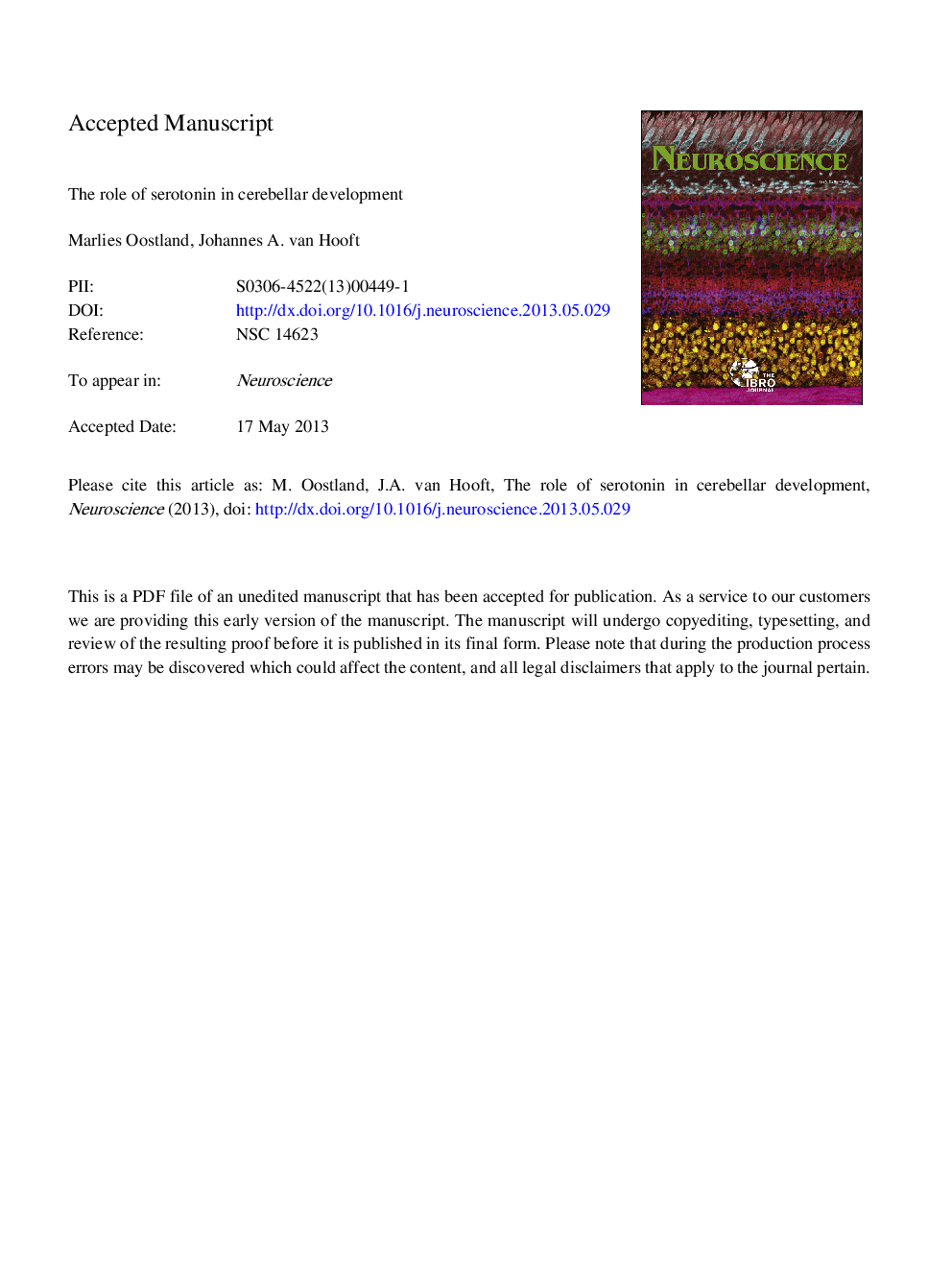| Article ID | Journal | Published Year | Pages | File Type |
|---|---|---|---|---|
| 6274638 | Neuroscience | 2013 | 44 Pages |
Abstract
In adult animals, the cerebellum is richly innervated by serotonin: serotonergic fibres are the third main afferent fibres into the cerebellum. However, the physiology of the serotonergic system and its functional significance are not fully known during development in the cerebellum. In this review we will focus on the serotonergic regulation of the cerebellum during postnatal development. We hypothesize a powerful role for serotonin in the physiology of the developing cerebellum. A presumably tonic activation of serotonin receptors by binding of serotonin becomes specific by temporally and spatially restricted expression of different serotonin receptors, each with their own (sometimes antagonizing) functions. During the first postnatal week, activation of 5-HT1 receptors expressed by both granule cells and Purkinje cells stimulates dendritic growth and synapse formation. Later, activation of 5-HT3 receptors expressed by granule cells limits dendritic growth of Purkinje cells via mediating the secretion of reelin, influences physiological maturation of Purkinje cells, modulates synaptic plasticity at parallel fibre-Purkinje cell synapses and thereby affects competition with the climbing fibres on Purkinje cell dendrites resulting in proper climbing fibre elimination. Last, activation of 5-HT2 receptors expressed by granule cells and Purkinje cells both during late postnatal development and in the mature cerebellum promotes the stability of synaptic activity. Thus, we propose that serotonin controls cerebellar development in three phases: (1) stimulation of dendritic growth and formation of synapses, (2) hard-wiring of neuronal connections with limits to dendritic growth but ensuring synaptic plasticity, and (3) stabilization of synapses. Taken together, serotonin receptors expressed by different cells in the cerebellum have a specialized role during postnatal development, but with some similar main effects. Distinct spatial and temporal expression of these receptors gives serotonin a powerful and specific role in cerebellar development.
Keywords
Related Topics
Life Sciences
Neuroscience
Neuroscience (General)
Authors
M. Oostland, J.A. van Hooft,
